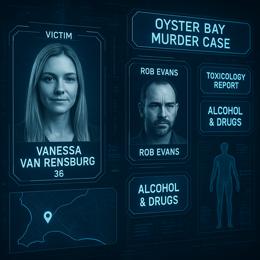Image created by AI
Testimonies Reveal Murder Plot in High-Profile Vicki Terblanche Case
The ongoing murder trial of Vicki Terblanche in Gqeberha, South Africa, saw a significant development as Dylan Cullis testified against Reinhardt Leach, Terblanche’s boyfriend, revealing a grim tale of drugs, manipulation, and murder. The case, which has captured public attention, unfolded further in the High Court on Tuesday, with details that seemed more like the plot of a crime thriller than real life.
Vicki Terblanche(42) was tragically murdered in Gqeberha, South Africa.Reinhardt Leach (36) the boy friend pleaded guilty to murder. Dylan Cullis (23) an accomplice who pled guilty
— ThabzAfrika🇿🇦🇱🇸🇷🇺 (@ThabzAfrika) January 29, 2025
Arnold Terblanche (55) the estranged husband was arrested.Mario De Ridder was present during murder pic.twitter.com/eeYSxIISH3
Cullis, currently serving an 18-year prison sentence for his involvement in the murder, met Mario de Ridder Jr. and Leach weeks before Terblanche's death. According to his testimony, the trio, along with Terblanche, were heavily involved in drug use, consuming substances like CAT, mandrax, and tik, complicating the dynamics within the group. Cullis described a particularly unsettling drive along Seaview Road where Leach allegedly fired two shots from a newly obtained .22 calibre gun, declaring his intention to kill Terblanche over a R5 million divorce settlement.
The plot thickened back at Terblanche’s house, where drug use continued until Leach proposed another drive. According to Cullis, Leach later admitted he couldn't go through with the shooting, leading de Ridder to suggest an alternative method involving drug-induced asphyxiation. They attempted to overdose Terblanche with a concoction of crushed Percocet mixed into a drink.
Cullis painted a disturbing picture of the night's events, detailing how he tried to intervene by placing an increasingly unstable Terblanche in the recovery position, only to be coerced by Leach later on to finish the murder. He described a horrifying scene where Leach smothered Terblanche with a pillow while restraining her. Despite Cullis’s claims of initial non-participation, the trio’s actions post-murder involved hiding Terblanche’s body, creating alibis, and selling her belongings.
Cullis is set to continue his testimony as the trial progresses, offering more insights into the tragic events leading to Terblanche’s untimely death, which a pathologist confirmed was due to toxic drug levels. This high-profile case not only highlights the dangerous interplay between drugs and crime but also the often-disastrous personal relationships embroiled within it, setting a grave reminder of the drug abuse prevalent in some sections of South African society.










